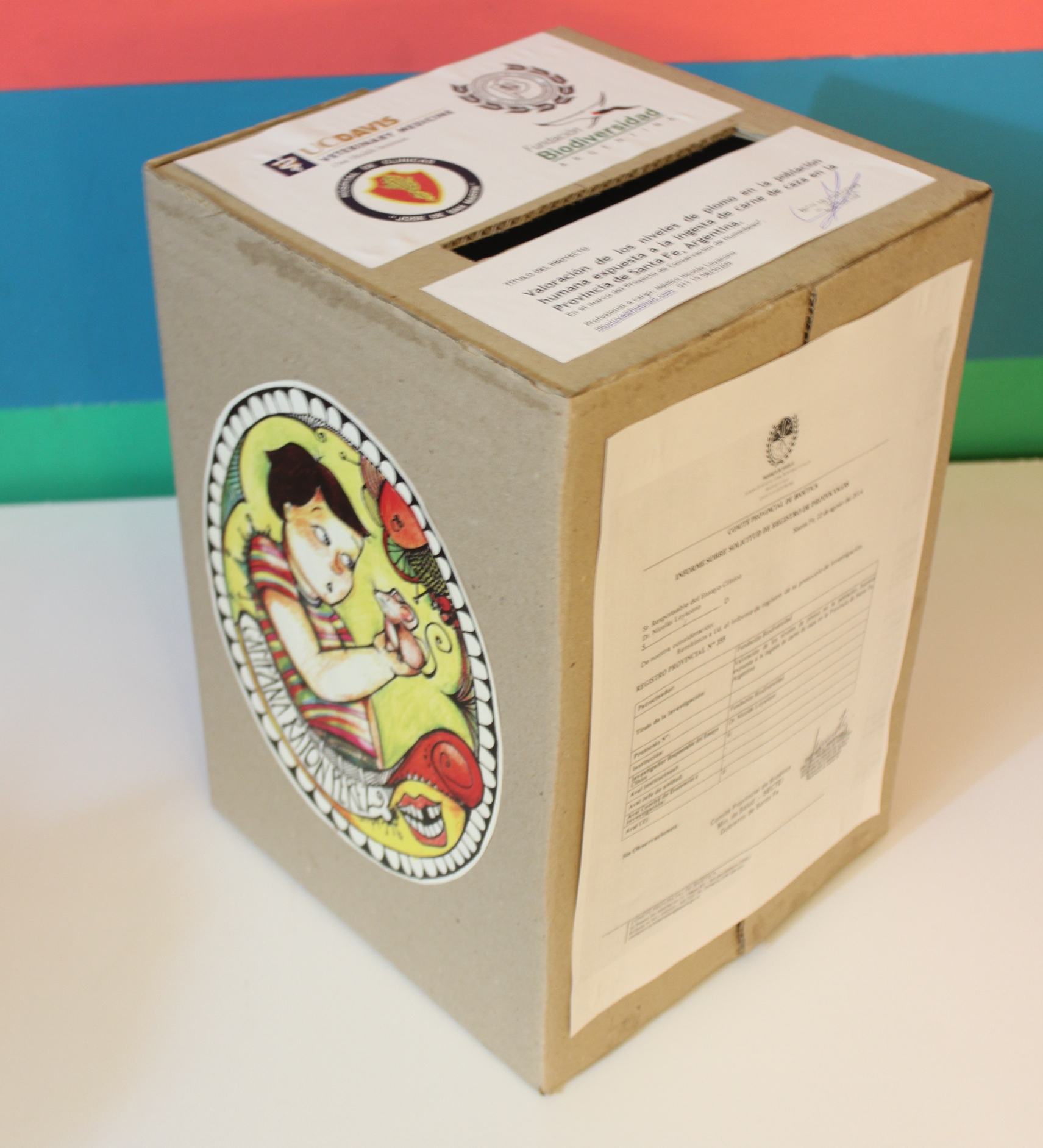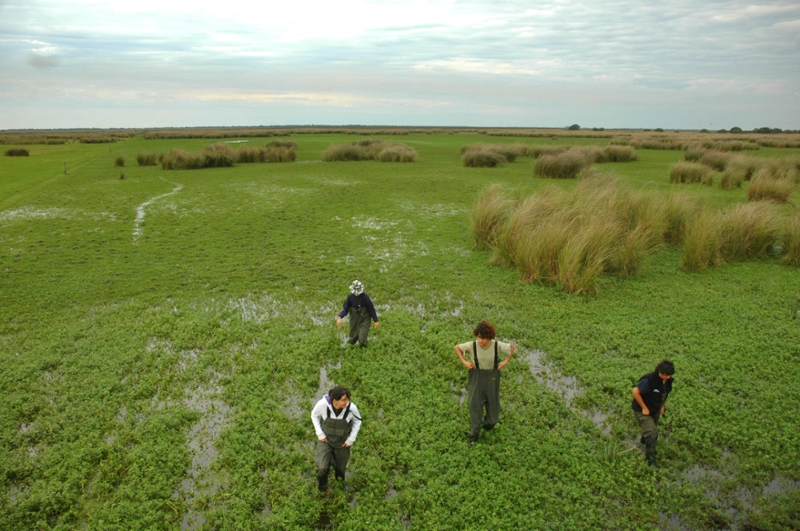Wetlands are vital to the health of wildlife and humans everywhere in the world. They provide habitat for fish and wildlife, and are instrumental in trapping floodwaters, recharging groundwater supplies, and removing pollution. Yet wetlands are being lost worldwide from over-exploitation, drainage and conversion (mostly for agriculture).
Argentina’s wetlands occupy nearly 22 percent of the country and because they are concentrated in the highest populated and most rapidly developing areas, they are disappearing at a much higher rate than other ecosystems.
About 253 bird species (25 percent of Argentina’s diversity), rely on wetlands for feeding, breeding and migration. Wetland loss could significantly impact waterbird conservation.
In addition, waterfowl hunting has become a profitable industry in Argentina. Over the past twenty years hunters from all over the world have congregated in weakly regulated hunting hotspots. Unsustainable hunting quotas and poisoning from ingested spent lead shot are significant threats for waterfowl conservation.
Threats We Are Addressing
Lead poisoning of waterfowl and wetlands from spent lead gunshot is a long recognized worldwide problem. Lead accumulated in the food web can cause serious health problems (and even death) in animals and humans alike.
Over-hunting can also lead to irrevocable population declines. Sustainability of recreational hunting requires management plans for hunted species, based on appropriate population monitoring schemes and scientific evidence of population numbers.
We are working to address knowledge gaps and warrant waterfowl conservation despite hunting harvests and landscape alterations.
Photo by Marcelo Romano
Our Research
Based on partial records of hunting permits in two (of eight) provinces where waterfowl are hunted, we estimate nearly 15 tons of spent lead are added to Argentina wetlands annually, making the total bioavailability of lead dangerously high. Our pioneer studies on Argentina’s waterfowl and aquatic environments over the past seven years have shown that lead pellet densities can reach 141 units per meters squared in the soil of hunting wetlands. This matches findings in some of the most polluted areas in Europe.
Not surprisingly, we also found that local waterfowl ingest spent lead pellets, that they accumulate lead in their bones as a result of long-term exposure, and that accrued lead levels are high enough to cause clinical illness. Moreover, we have also detected lead in duck predators such as yellow anacondas (Eunectes notaeus).
Lead is not only an extreme health risk for wetland wildlife. People from the most vulnerable sectors of the population commonly feed on poisoned ducks handed out by hunting lodges.
 Public Health
Public Health
Lead causes irreversible damage to the brain, and is particularly harmful for children and pregnant women. Lead poisoning jeopardizes growth, development and immunity, even when exposure is chronic and at low-doses. Studies have shown that each microgram of lead per deciliter of blood, implies a loss of 0.25 IQ points in children, leading to broad consensus that there are no “safe” blood lead levels.
Dr. Nicolás Loyacono, from Fundación Biodiversidad and Hospital de Clínicas “José de San Martín”, Buenos Aires, has joined our project to evaluate lead exposure in people living near hunting hotspots. He has recently launched the “Tooth Fairy” campaign in schools, by which he aims to collect a history of children’s exposure since conception by analyzing lead in their donated baby teeth. (Photo by Nicolás Loyacono)
Publications:
- A review of lead contamination in South American birds: The need for more research and policy changes
- Lead pollution from waterfowl hunting in wetlands and rice fields in Argentina
- Recent and Chronic Exposure of Wild Ducks to Lead in Human-modified Wetlands in Santa Fe Province, Argentina
- Lead gunshot pellet ingestion and tissue lead levels in wild ducks from Argentine hunting hotspots
- Lead exposure affects health indices in free-ranging ducks in Argentina
Changing Policy
Because of the significance of lead pollution from hunting, 29 countries have banned lead shot in wetlands, and a few have banned all forms of lead ammunition.
With the evidence gathered through our research we have strongly advocated policy change, and succeeded in Santa Fe province, which in 2012 responded by enacting a 50 percent ban on lead gunshot. This prohibition is the first of its kind in Argentina and South America. Two more provinces have recently initiated lead banning processes.

Photo by M. Romano
Community Outreach
After two years of intensive work with rural communities near hunting hotspots in our study area, in 2013 we launched the “Earth Guardians” initiative, spearheaded by Dr. Andrea Caselli, from Universidad Nacional del Centro de la Provincia de Buenos Aires, our long-term partner in this project. Earth Guardians is a participatory network that engages educators, children, citizens, governments and hunters as citizen scientists. The goals are to enhance local community appreciation of wetland biodiversity and ecosystem services by using natural resources as education tools; and to strengthen citizens’ stewardship role in wetland conservation.
In this context, we are using waterbird monitoring to demonstrate the strength of community interventions for conservation and to obtain information on the biology and population status of hunted waterfowl -- a critical knowledge gap.
Earth Guardian teams are established in schools neighboring small, threatened wetlands, and once a year, they perform synchronized waterfowl counts and report them to a central database we’ve established for this purpose. These counts provide a fantastic setting to inspire children about the wildlife in their area. Likewise, teachers use this activity to achieve numerous teaching goals, as students must acquire and apply knowledge on topics such as natural resources, ecology, computer sciences, and mathematics, as well as develop skills in the use of technologies and tools including spotting scopes, mobile phones, laptops, and bird guides.
To date, we have successfully established five duck-counting teams, with more than 200 school students and 20 teachers in three different provinces, and performed an initial duck survey trial with each team.
Photo by Andrea Caselli
Protecting Wetlands
We are currently setting the legal framework for the establishment of Strategic Educational Sites for Birds (SEEA), a new protection category for wetlands which do not qualify as Important Bird Areas (IBAs) or Ramsar sites due to their transformed surroundings, but are still significant for waterbird conservation and educational purposes. SEEAs will be living classrooms for Earth Guardian teams in charge of waterfowl monitoring, research and wildlife protection. The first SEEA, "Laguna El Platero" in Santa Fe Province, was inaugurated on October 16th, 2014.
Partners
The current 2 main partners are UC Davis and Universidad Nacional del Centro de la Provincia de Buenos Aires (Institute of Sustainable Development). Initially the Wildlife Conservation Society also played a major role.
Support this work



